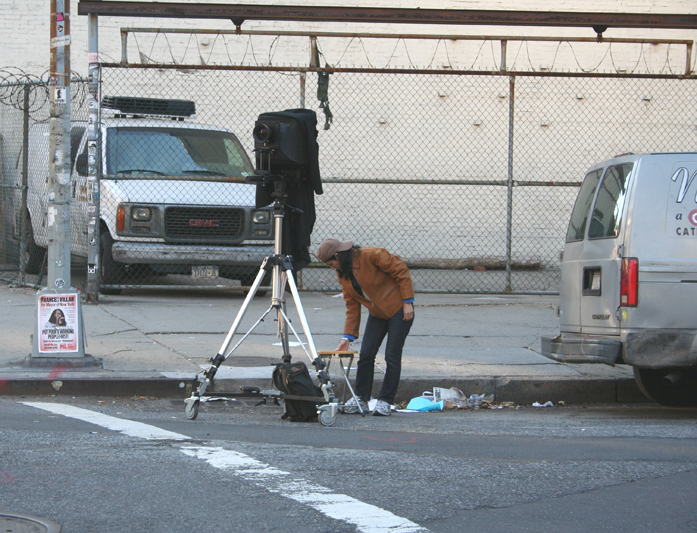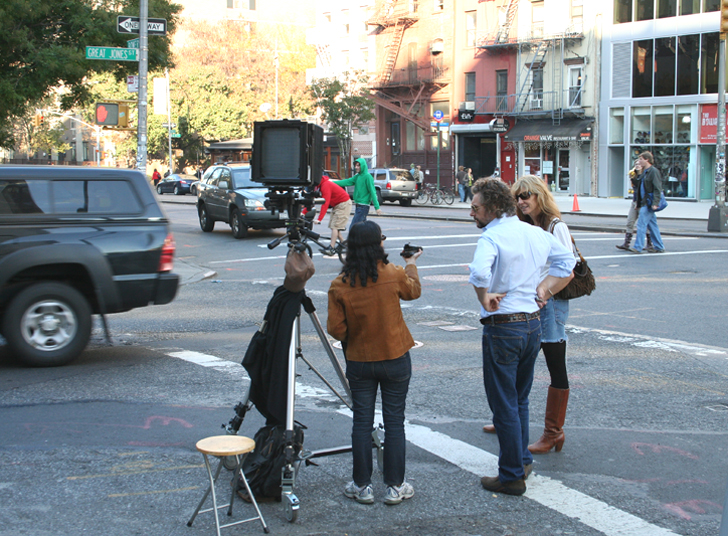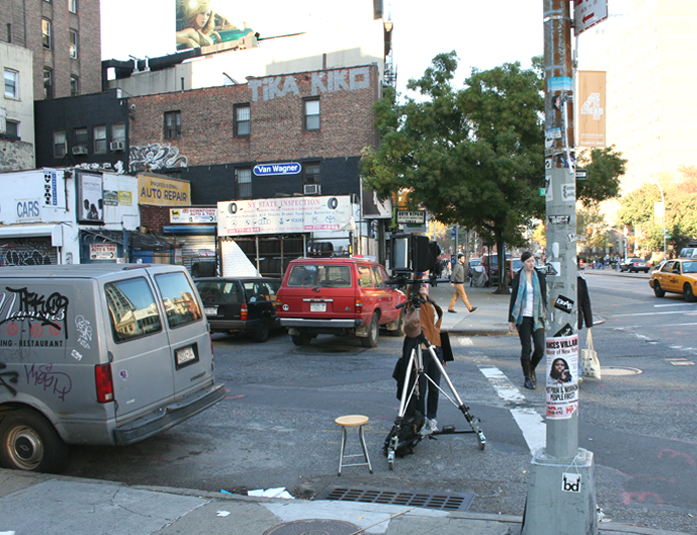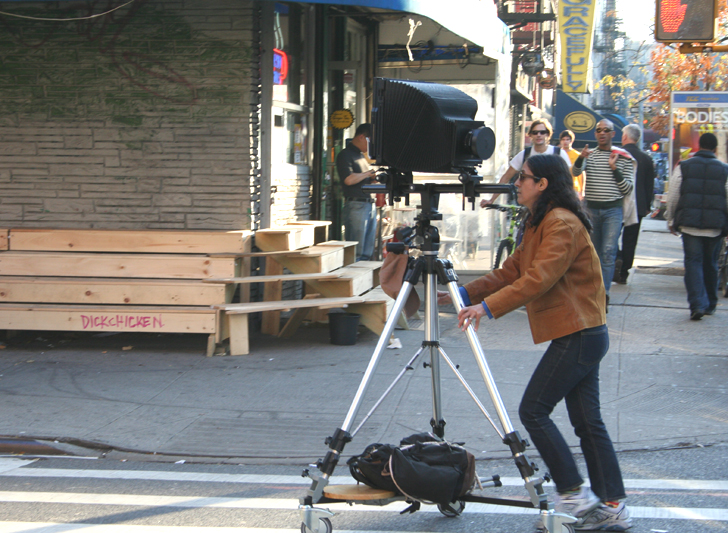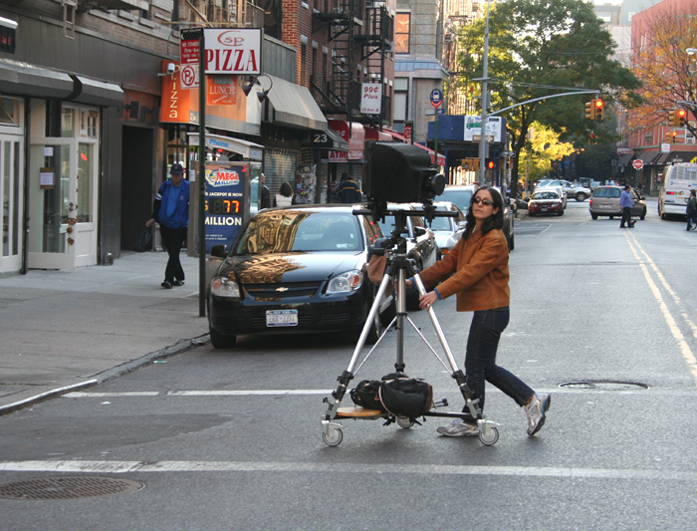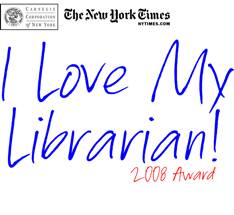November 11th, 2009 · 5 Comments
Tags: Arezoo Moseni · Arkitektur · Contemporary Art · Humanity · New York · Photography · Walking
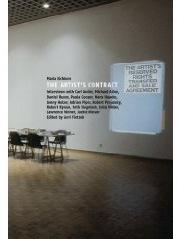 Based on a 1971 contract produced by exhibition organizer Seth Siegelaub and lawyer Robert Projansky, artist Maria Eichhorn took nine years to interview a group of artists and gallerists discussing the troublesome aspects of drafting contracts that may or may not have protected artists and their future gains. Two pictures in the book show Vassilakis Takis, the daring and pioneering sound sculptor and a member of the Art Workers Coalition, remove his kinetic sculpture from a 1969 group exhibition at MoMA. The Artist’s Contract is a must read for anyone who is actively involved in the business of contemporary art. One of the main conflicting issues in the book, is whether artists should collect any type of royalty after the initial sales of their works as they continue to be traded in auction houses and the secondary markets in the United States.
Based on a 1971 contract produced by exhibition organizer Seth Siegelaub and lawyer Robert Projansky, artist Maria Eichhorn took nine years to interview a group of artists and gallerists discussing the troublesome aspects of drafting contracts that may or may not have protected artists and their future gains. Two pictures in the book show Vassilakis Takis, the daring and pioneering sound sculptor and a member of the Art Workers Coalition, remove his kinetic sculpture from a 1969 group exhibition at MoMA. The Artist’s Contract is a must read for anyone who is actively involved in the business of contemporary art. One of the main conflicting issues in the book, is whether artists should collect any type of royalty after the initial sales of their works as they continue to be traded in auction houses and the secondary markets in the United States.
It is Okay for Artists to Make Money…No, Really, It’s Okay covers the findings from a Harvard research project, conducted by Robert D. Austin and Lee Devin, that might be of value especially to those organizing artist training programs on how to thrive in the art market. Although this research does not include the type of performance work similar to Tino Sehgal’s.
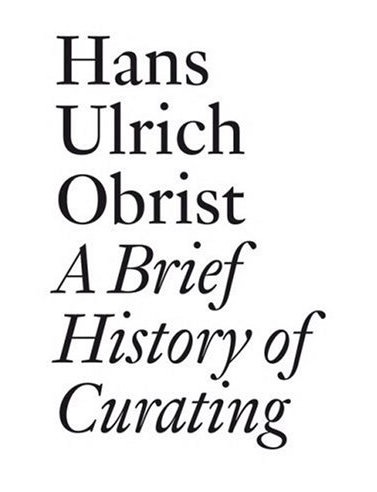
Another gripping book distributed by D.A.P. is A Brief History of Curating by Hans Ulrich Obrist the Co-Director of Exhibitions and Programs at Serpentine Gallery in London. The book is a collection of candor interviews with some of the most notable curators of contemporary art. It provides an entertaining look into their experimental and risky practice of mounting challenging exhibitions as they have opened up whole new worlds for artists, viewers and writers. Obrist is covering considerable mileage using the interview format. It would certainly be captivating to hear him engaged in a marathon dialgoue with curator and writer Okwui Enwezor.
Tags: Art · Art Market · Bern · Books · Business · Contemporary Art · Culture · Debate · Risk · Strategy · Theory
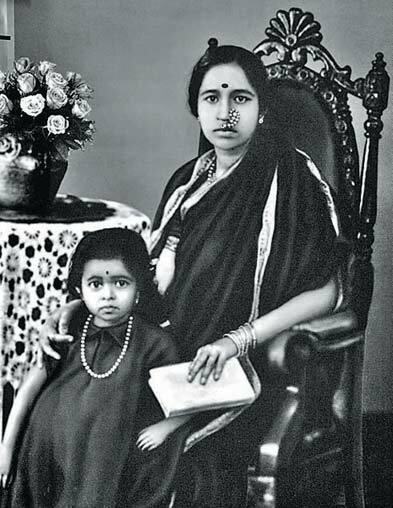

Gangubai Hangal, the renowned Indian Classical singer, died on July 21, 2009. Twelve years earlier on the same day the revered anchorman Walter Cronkite, who died on July 17th, took the helm of USS Constitution in Massachusetts Bay. One common characteristic linking the two was their dignified and powerful voice. With her abundant courage Hangal overcame obstacles and prejudices as she galvanized audiences worldwide. During his life time Cronkite, the epitome of confidence, was known as “the most trusted man in America.”
Trust and history, who will tell it and how will it be told? So many virtual communities with various agendas have created a presence on the Internet and the mass media, as they broadcast all types of information presented as fact. More than ever in the history of humankind, trust and truth are at stake as professional journalists risk their lives for the nobel pursuit of exposing lies and changing misconceptions.
Tags: Courage · Debate · History · Humanity · Music
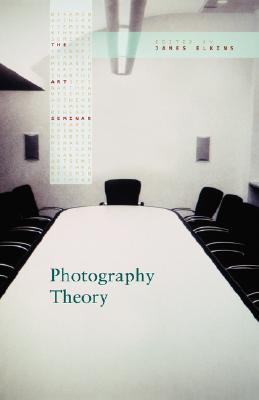
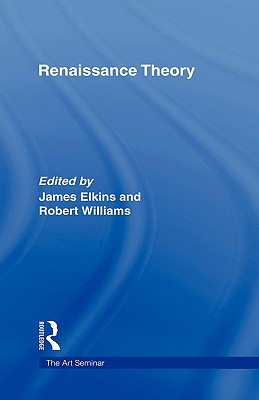
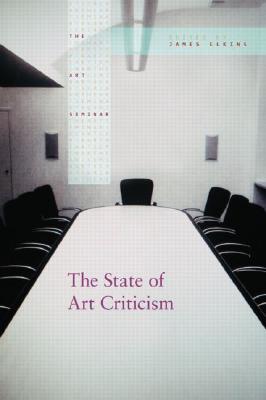
James Elkins, E.C. Chadbourne Chair of Art History, Theory and Criticism at School of the Art Institute of Chicago, has been busy editing several insightful and inquisitive books as part of The Art Seminar series published by Routledge.
The State of Art Criticism is a follow up to his earlier book What Happened to Art Criticism where he painstakingly analyzes the writings of contemporary art critics. He argues that critics have lost their fighting edge as they have settled into an interpretive mode of presenting their views. Despite the proliferation of art writings, critics are neither judgmental nor willing to make or break artists. Elkins’ mission is to bring back staunch art criticism, and establish it as a field of study on the graduate level. Is it okay for critics to be opinionated after many years of non-committal art criticism? According to Elkins there is much more art writing appearing in various forms than ever before.
In his article, With newspapers in terminal decline, what future for arts journalism? published in the Issue 202 of The Art Newspaper, András Szántó reminds us how established newspapers are struggling with bankruptcy and laying off seasoned journalists as independent journalism continues to flourish in the form of blogs. Szántó, Director of the NEA Arts Journalism Institute at Columbia University’s Journalism School, cites ArtBabble as a successful example of an online collaborative project, featuring the high quality video productions of several institutions. He stresses that this type of innovative effort can lead to future hybrid models that can potentially save arts criticism and reportage. Several American universities including Columbia have strong enrollments in their journalism programs. In the same article Vartan Gregorian, President of the Carnegie Corporation of New York, is mentioned suggesting “buying newspaper subscriptions for college students—a bailout that would replenish future readers.”
Saving the media business was the main subject of the recent panel discussion The Future of Arts Journalism hosted by Sree Sreenivasan, Dean of Student Affairs at Columbia University Graduate School of Journalism. The desire and need to deliver truthful, objective and lasting storytelling continues to attract many writers and students. Clearly journalism can not be exempt from the similar challenges faced by other businesses attempting to be bullish and thrive in this highly competitive and technological environment.
Tags: Art · Books · Business · Criticism · Debate · Education · New York · Technology · Theory · Video
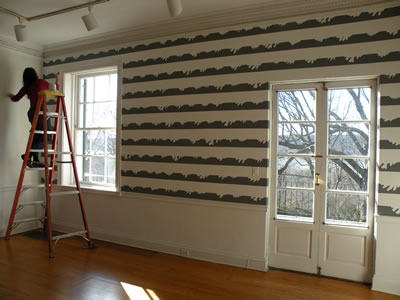

A is for alba, currently on view at Wave Hill, is Ilene Sunshine‘s most recent magical site-specific installation. There has been a significant transformation in the way viewers experience this installation, since its opening in March and the seasonal change in the surrounding landscape.
Similar to Santiago Calatrava who rises at 4 a.m., Sunshine is one of those innovative thinkers whose routine is to be up around 4 a.m. to go to her studio. Earlier in her career Octavia Butler was up by 2:00 a.m. every morning so she could write before going to her job working as an office janitor. There is something heroic about the act of being up so early in the morning to pour oneself over an artistic pursuit that may or may not crystallize in a tangible form. What triggers these restless individuals to be so disciplined?
In the case of Sunshine, her ongoing exploration in forming a whole new sculptural language is what fuels her unrelenting dedication. She continues to probe into the possibilities of hybrid and green constructions with her unique choice of organic and man-made found materials.
Tom Wolfe, in his book The Painted Word, mentions a conceptual artist who gets up at 4 in the morning with an intense craving for a piece of toast as she goes on to describe the visualization process of picturing the toast in great detail.
The notion of early riser artists is in direct conflict with the cliche image of artists who stay up through late night hours. In his book Formulas for Now, Hans Ulrich Obrist has compiled his favorite formulas concocted by some of the most original thinkers. Design a formula for the 21st century was the criteria, and the gamut ran from diagrams to manuscripts, manifestos and recipes.
Individual artists who consistently wake before dawn and are becoming exceedingly influential in their extraordinary pursuits, might be too busy to subscribe to the limitations of any manifestos.
Tags: Arkitektur · Books · Contemporary Art · Exhibitions · Installation · Sculpture · Strategy
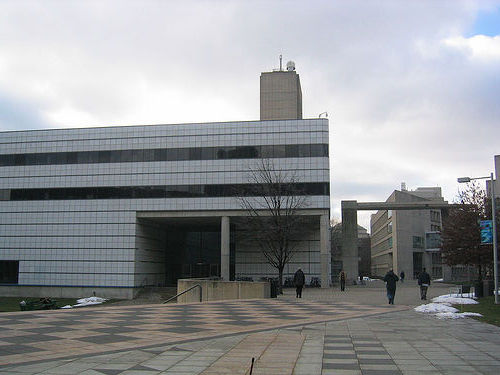

The winner of 2009 Buckminster Fuller Challenge was announced yesterday. Sustainable Personal Mobility and Mobility-on-Demand Systems (SPM/MoD) was submitted by Smart Cities Group an interdisciplinary team of students at MIT. The June 6th ceremony will be part of a weekend long celebration in Chicago where the $100,000 prize will be presented to the winners .
Fly’s Eye Dome, one of Fuller’s best known inventions, will be on view at Merchandise Mart where the ceremony will conclude with a presentation by the visionary designer Bruce Mau.
It remains to be seen how this invention will further bike sharing attempts in urban centers, and whether it will be embraced by city dwellers especially in the light of projected public transportation fares increase.
Tags: Arkitektur · Business · Design · Environment · Strategy · Technology
April 19th, 2009 · 1 Comment
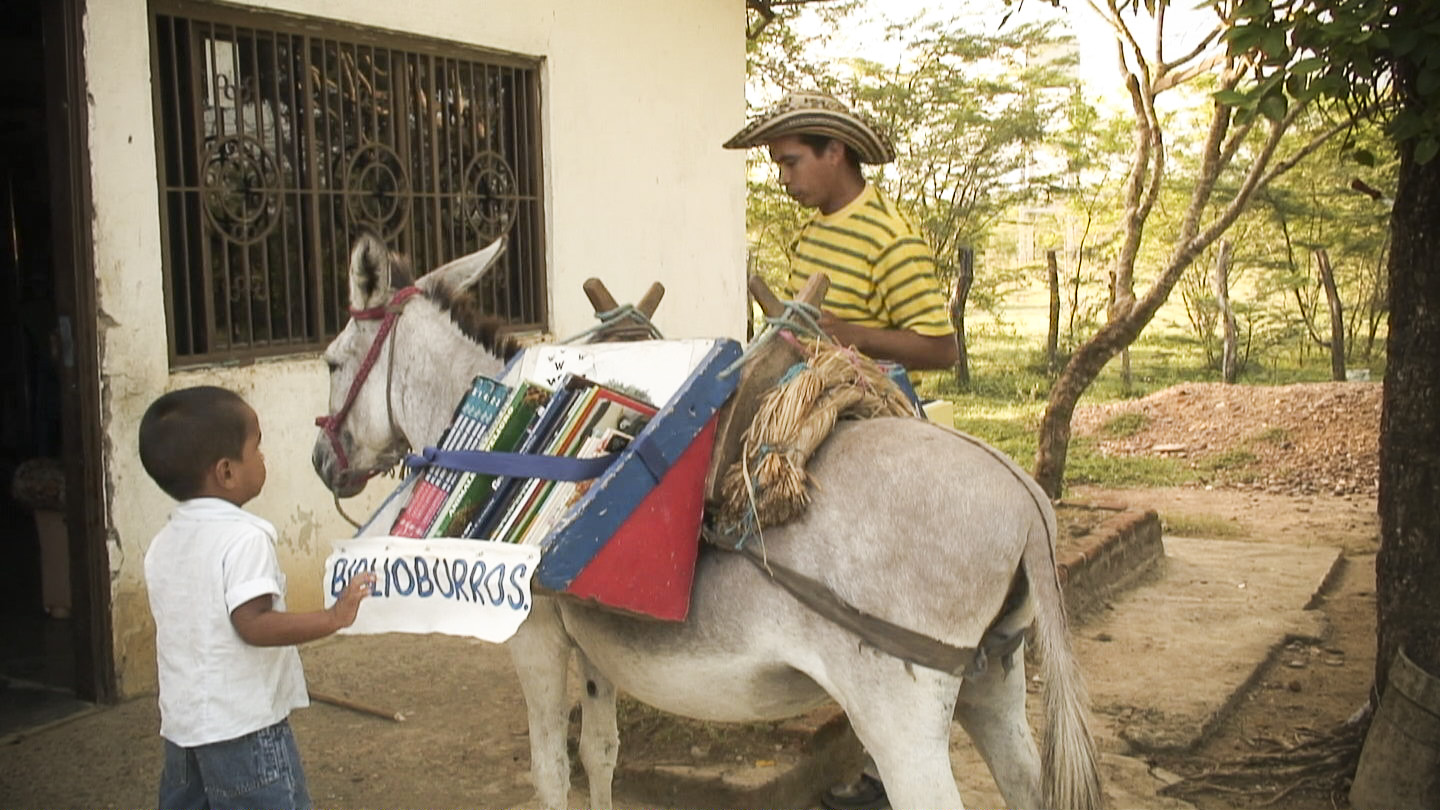

A month ago Evan Mirapaul, the contemporary art collector and founder of Elements Quartet, pulled off a gracious last minute appearance in a revealing Artist Dialogue with brilliant librarian and artist Deirdre Donohue. He was ecstatically enthusiastic as he showed us his copy of The Library at Night by Alberto Manguel.
National Library Week (April 12-18) celebration comes to a close, as our public libraries are in the midst of excruciating financial set backs. Although “difficult days are ahead,” this turmoil can possibly lead to one of the most creative times and a new chapter in the history of public libraries in the United States.
Many can recall the past recessions of 1987, 1991, 1997, 2001 and the current crisis that has put a damper on the progress of not-for-profit public institutions. In Kind of Blue: Pushing Boundaries with Miles Davis we gain insight into how Davis’ working method shifted to a much simpler approach and the fact that he preferred and used many first takes in his recordings. April 22nd marks the 50th anniversary of this recording and there is much to be learned from simplicity as our lives grow more complicated and we are distracted by meaningless activities.
Any kind of a super domination is not healthy for an open and sustainable growth in our culture. Whether we should pay much attention to What Would Goolge Do? is a personal option. The longevity of our public libraries is at stake. Communities with their urgent dependence on the crucial services provided by the dedicated librarians, are also at stake.
It is much easier to follow than to take the bull by the horn and invent a new approach. Now is the time for librarians to take responsibility and set a new precedence in librarianship. When it comes to saving our communities every librarian can be a natural fundraiser. Hope and hospitality, community building and education should be the foundations of our public libraries as we hoe ahead to create a fertile ground for organic growth.
Tags: Books · Business · Community · Contemporary Art · Culture · Librarians · Libraries · Music · New York · Photography · Strategy
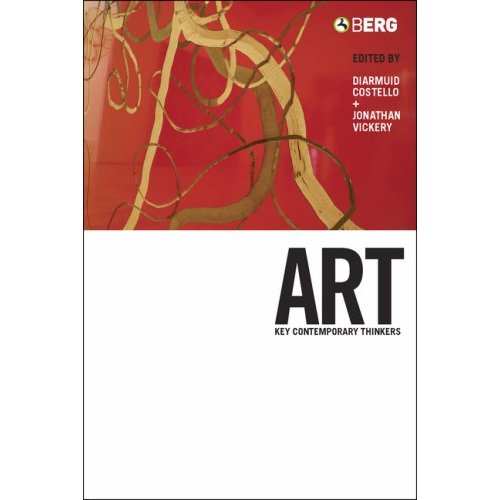
Thanks to
Diarmuid Costello and
Jonathan Vickery students, art collectors and anyone else interested in understanding contemporary art, can tap into short and succinct explanations of theories by some of the major thinkers who have formulated their interpretations of art since 1960. This book is an explicative and critical index to the works and ideas of “key” thinkers (including artists) who have influenced our understanding of contemporary art.
Art: Key Contemporary Thinkers is an essential book outlining the complexities of philosophies, theories and practices involved in the production and understanding of contemporary art.
The art historian, independent scholar and critic Tom Holert, based at the Academy of Fine Arts in Vienna, has concentrated his theories on “art as knowledge production,” and his essay Art in the Knowledge-based Polis is an inciting look at how this concept has come to fruition over the past four decades.
 Despite the disappearance of critics’ columns in many publications Noël Carroll, who is included in the previous book, puts forth a somewhat solid argument to reclaim the dominant role of critics in the world of art and culture. In his recent book On Criticism, part of Routledge Thinking Action series, he bases his theory on a poll noting 75 percent of critics not subscribing to judgmental interpretation of a work. He revamps the historical role of critics as evaluators and emphasizes their vital part in observing, analyzing, interpreting and evaluating the arts. He lays down the necessary tools equipping critics to determine the quality and success level of a work. His concept of “success value” pivots on whether artists have the ability to fully achieve their goals and intentions. The originality and historical impact of works are two of the main pillars in Carroll’s evaluative theory of success linked to artists’ intentions. Ironically since 1970s art critic Irving Sandler has based his thinking on how crucial artists’ intentions are to understanding art.
Despite the disappearance of critics’ columns in many publications Noël Carroll, who is included in the previous book, puts forth a somewhat solid argument to reclaim the dominant role of critics in the world of art and culture. In his recent book On Criticism, part of Routledge Thinking Action series, he bases his theory on a poll noting 75 percent of critics not subscribing to judgmental interpretation of a work. He revamps the historical role of critics as evaluators and emphasizes their vital part in observing, analyzing, interpreting and evaluating the arts. He lays down the necessary tools equipping critics to determine the quality and success level of a work. His concept of “success value” pivots on whether artists have the ability to fully achieve their goals and intentions. The originality and historical impact of works are two of the main pillars in Carroll’s evaluative theory of success linked to artists’ intentions. Ironically since 1970s art critic Irving Sandler has based his thinking on how crucial artists’ intentions are to understanding art.
In the past forty years, the judgmental power has been shared by critics and curators. Germano Celant and Jan Hoet come to mind. They organized ground breaking international exhibitions in addition to theorizing and coining new art movements. Recent examples are Okwui Enwezor and Robert Storr who have etched their seats in the critic/curator superstar arena. In their case the process of critical thinking takes a more complicated turn considering their prominent positions in the academia as well as their identities as a poet and an artist.
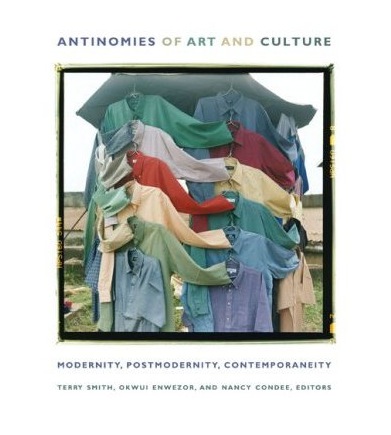 Enwezor acting as an editor also contributes an essay to a remarkable collection of critical writings titled Antinomie of Art and Culture: Modernity, Postmodernity and Contemporaneity. Historicism and the effect of globalization on culture and everyday life form the foundation of this publication. The essays question the formulaic terms developed in the past twenty years in relation to the contemporary life experience especially in terms of political agendas and events. Contemporarneity is presented as a perpetual and cyclical reinvention of the past emerging into other forms of existence.
Enwezor acting as an editor also contributes an essay to a remarkable collection of critical writings titled Antinomie of Art and Culture: Modernity, Postmodernity and Contemporaneity. Historicism and the effect of globalization on culture and everyday life form the foundation of this publication. The essays question the formulaic terms developed in the past twenty years in relation to the contemporary life experience especially in terms of political agendas and events. Contemporarneity is presented as a perpetual and cyclical reinvention of the past emerging into other forms of existence.
The Curator’s Circle, Art Basel 2006 ⓒ Arezoo Moseni
Tags: Arezoo Moseni · Art · Basel · Books · Contemporary Art · Criticism · Culture · Education · History · Online Journals · Philosophy · Strategy · Theory
 Tomorrow is Persian’s new year and the first day of spring. Persians all over the world will rejoice and gather to celebrate one of the most jovial rituals dating back to Zoroaster. He walked the Persian lands to spread his idea of good deeds. “Do no evil” is ironically what we need at this time of cultural, economic and political crisis.
Tomorrow is Persian’s new year and the first day of spring. Persians all over the world will rejoice and gather to celebrate one of the most jovial rituals dating back to Zoroaster. He walked the Persian lands to spread his idea of good deeds. “Do no evil” is ironically what we need at this time of cultural, economic and political crisis.
Persians have survived many wars and centuries of atrocities through their sheer resilience, humor, love of nature and respect for their fellow human beings. Noerooz should also mark the participation of all Persians in non-violent efforts to bring about peace and justice in this transient world.
Tags: Body · Borders · Community · Courage · Design · Evolution · Humanity · Iran
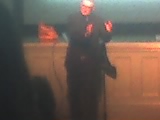
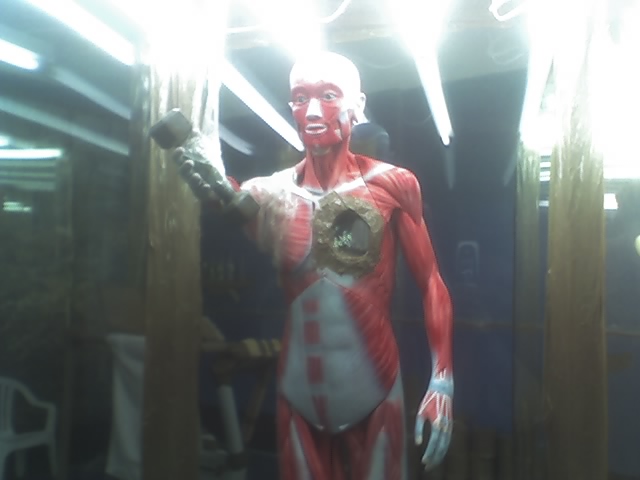
In his comical and dysfunctional Universal Gym, Hirschhorn brings back his usual low tech constructions made from cardboard, foil, glass, heart monitors, rubber, tape, trophies, wood, etc. overloading viewers with stuff of consumerism.
The motionless figures are similar to stuffed museum specimen. The hearts are gouged out of their chests, and they seem distant. Love which is one of Hirschhorn’s four mantras is not permeating this environment, and his proclamation of “Doing Art Politically: What Does This Mean?” has lost its vigor.
One may wonder what Jean Tinguely might have done entering this gym where every interactive item is either bolted or taped down. Even though there is a good laugh upon entering this gym, it is frustrating to walk around the useless equipments especially for those who love working out.
Despite his active imagination, Hirschhorn has not taken a risk for quite some time. Adding participatory elements may bring back the “provocative” in his work where viewers are challenged to have a first hand experience of his mantras and environments.
Thomas Hirschhorn [pictures + videos] ⓒ Arezoo Moseni
Tags: Arezoo Moseni · Basel · Body · Books · Contemporary Art · Exhibitions · Gym · Health · Installation · New York · Sculpture

Each year as part of the Buckminster Fuller Challenge, a distinguished jury panel awards a $100,000 prize to an idea which supports the development and implementation of a strategy with significant potential to solve humanity’s most pressing problems.
Comprehensive Design for a Carbon Neutral World: The Challange of Appalachia was John Todd’s winning idea in 2008. “You never change things by fighting the existing reality. To change something, build a new model that makes the existing model obsolete.” Buckminster Fuller
Biosphère Montréal ⓒ 2001 Cédric Thévenet
Tags: Arkitektur · Community · Design · Environment · Evolution · Mind · Strategy · Technology · Theory
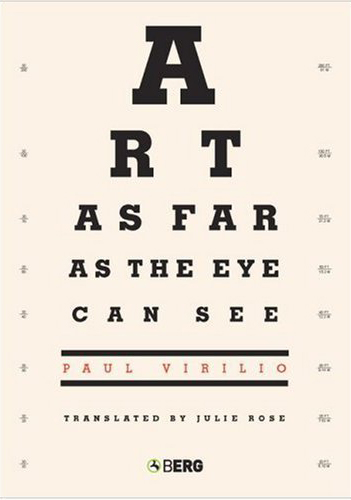
Another fun quick read by the remarkable thinker Paul Virilio who wrote The Aesthetics of Disapperance in 1991. In Art as Far as the Eye Can See, he debates the ramifications of the disapperance of the aesthetic. He reminds us of Albert Camus’ observation that 20th century would become synonymous with fear and how fear perpetuates to dominate our lives. As our love affair with the allure of technology intensifies, we may benefit from sensing the human spatial presence and the potential of developing the ability to detect electromagnetic fields and strengthen our other (eleven or twelve) senses.
Tags: Art · Body · Books · Evolution · Libraries · Mind
February 8th, 2009 · 1 Comment

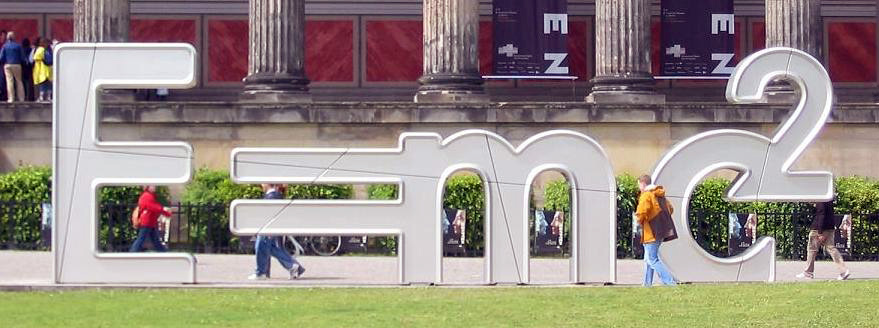

New York Times is the only publication providing a public service by continuing to publish its weekly book review without a single advertisement, and making the New York Times Book Review archive (1981-present) available online free of charge. How many other companies are actively pursuing projects that would directly benefit the public?
credit: Berlin Walk of Ideas, 2006. [Creative Commons]
Tags: Books · Evolution · Libraries · Outdoors · Sculpture · Sports
February 6th, 2009 · 1 Comment
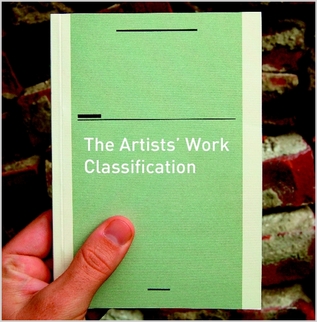
An in depth at times repetitive book classifying the activities determining the multifarious aspects and stages involved in an artist’s work before, during and after the production. Alison Gerber should be commanded for her three years of research leading to this timely publication tapping into a subject area in need of periodic updates and revisions as artists challenge the concept of who they are and what they do.
Tags: Books · Contemporary Art

Over the past seven or eight years the contemporary art market has had an unprecedented rise in activities and prices. The irony is that if we were to look through the auction catalogues of contemporary art from fifteen or twenty years ago we will recognize works by artists who have lost their place in the limelight.
The majority of art world is not inventing culture because it is heavily influenced by fashion and Hollywood trends. If collectors thought, even for a moment, that their art collection would do terribly in the market they would stop investing in art. The “young artists” frenzy and the periodic oscillation from western to non-western art, have only created a false landscape for the production and perception of art.
Many of us may not agree with David Galenson and his theories because it is much more exhilarating to be part of a mysterious and unregulated scene. Those driven artists, who neither depend on the art market nor on social trends and are tenaciously at work in their incubators, will ultimately take the quantum leap and liberate art. Our reception and understanding of their work will not be limited by their age, nationality, race, gender, discipline or prestige.
Tags: Art Market · Bern · Books · Business · Contemporary Art · Culture · Museums · Strategy
January 10th, 2009 · 1 Comment
Anna Kiraly,
Nicole Cohen,
Olive Ayhens,
Pradeep Dalal,
Darcy Spitz,
Stephen Spretnjak,
Judith Linhares,
Caryl Herzfeld,
Patricia Dahlman,
Marisa van Pol,
Joan Grubin,
George Stolz,
Ilene Sunshine,
Anujan Ezhikode,
Tobi Zausner,
Sandra Friedberg
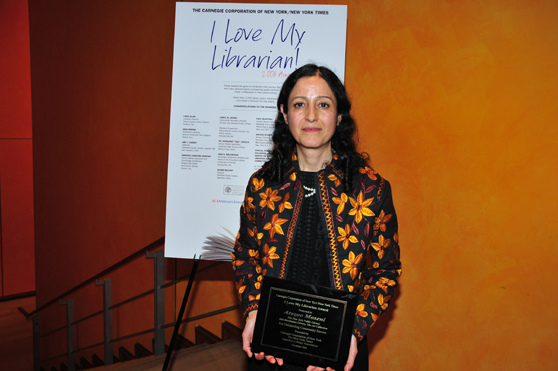
Despite the tight layout and typos, you can read quotes from the award winners in the January/February 2009 issue of American Libraries. The ten librarians, each at a different stage of their careers, express what it means to them and how they feel about the award and being loved. They reminisce about the enormous satisfaction experienced in their jobs as librarians, and how they would like their professional contribution to last.
photo credit: Paul M. Gaykowski
Tags: Arezoo Moseni · Art · Community · Contemporary Art · Librarians · Love · New York
Tags: Arezoo Moseni · Courage · Librarians · New York
This year’s fireworks show was one of the least memorable as the rain and humidity intensified the side effects of the lingering and air polluting smoke, sulfur, heavy metals and toxins.
Pablo Päster of salon.com analyzes the hazardous substances in fireworks.
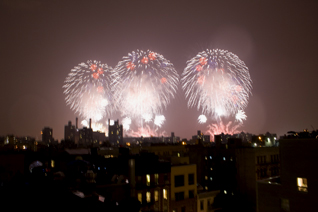
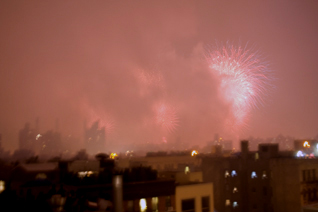
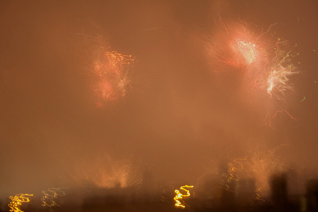
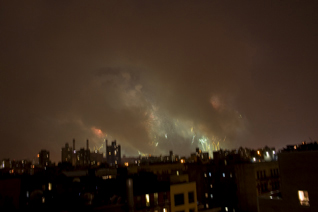
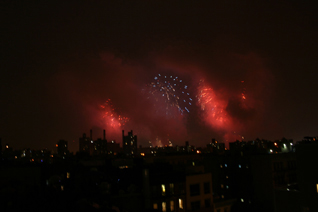
East Village, 04.VII.08 ⓒ Arezoo Moseni
Tags: Arezoo Moseni · Fireworks · New York · Photography · Pollution
My Art:21 Guest Blogs ….. 16 – 27 June 2008
Rotating selection of blogs by guests invited to write about anything that intrigues them. The editor of Art21 Blog is Kelly Shindler Director of Special Projects at Art21. Here is the list of the top 20 Art blogs compiled by Joy Garnett, Associate Library Manager of Robert Goldwater Library at the Met.
Tags: Arezoo Moseni · Art · Art21 · Books · Community · Contemporary Art · Courage · Film · Installation · New York · Sports · Video
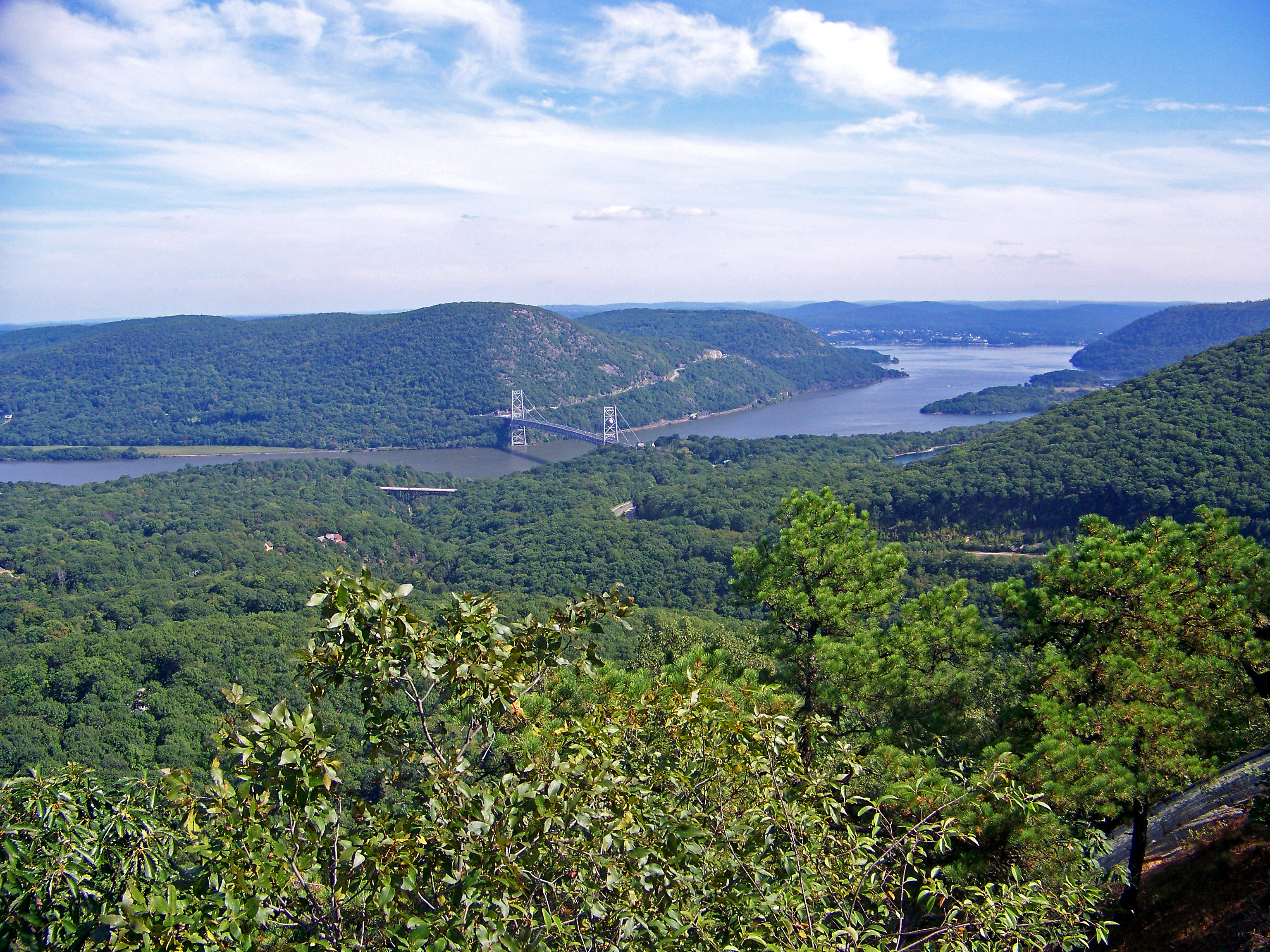
The recovery from my mountain climbing fall is yet to be fully complete. My 25 foot fall was a life changing experience making me realize how lucky I was to live through it. This post would not exist, if it were not for a branch on a fallen tree poking through my sleeve and holding me back from falling farther. Solid muscles are a good protection against bone injuries. I did lose a lot of blood during the hour and a half it took to climb back down and was taken to the emergency department at Valley Hospital in Ridgewood, NJ. I ended up in the pediatrics department with kind staff and walls adorned with large paintings of animals. Too bad they had to take all those X-rays. The two doctors in charge decided that a specialist had to be called in for the surgery.
Dr. Raffi Agopian arrived promptly. After the examination he informed me that the surgery room and anesthesiologist were not available for another two hours. We decided not to wait and to have the surgery with local anesthesia administered by him. It was a painful surgery, and Dr. Agopian did a superb job. Later I was pleased to be taken to a room with a window facing the moon. The next morning Dr. Agopian was the first person at my bedside even though he had to leave early to go to Baltimore for his mother’s hip surgery. He brought with him his colleague Dr. Joel Nizin. I had my follow up visit with Dr. Nizin who took out the tube a few days later. We had a nice chat and I found out that he and his family were one of the original residents of Stuyvesant Town in Manhattan.
Returning to Bear Mountain is at the top of my list after I have my large dose of sailing and swimming this summer…
Tags: Arezoo Moseni · Body · Climbing · New York

